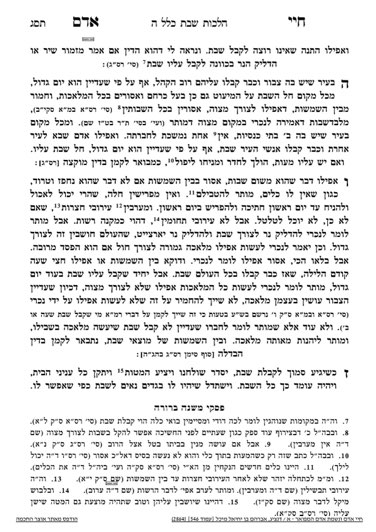We are continuing in siman 6. We left off with the Chayei Adam’s statement that one cannot separate challah during bein hashmashos, even though it would appear to be an issur derabanan and a significant need, which should be muttar bein hashmashos. Today, we will explain the Chayei Adam’s reasoning.
The halacha is that, mideoraysa, the mitzvah of challah only applies in Eretz Yisroel. Challah separated in chutz la’aretz was instituted by Chazal. When it comes to challah in Eretz Yisroel, the dough is considered tevel (untithed) and is assur to consume until challah is separated. In chutz la’aretz, if one is unable to separate challah, they can eat the bread and should leave some at the end to serve as their hafrashas challah. (The hafrasha is only valid if they take challah and leave over something behind as chullin (known as shirayim). Either way, as long as they leave enough to separate challah and leave over chullin, the challah is valid.) Thus, the Chayei Adam holds that if a person did not separate challah before Shabbos, they may not do so during bein hashmashos, as there is a simple way to avoid transgressing the issur derabanan of tikun maneh. In Eretz Yisroel, one may not eat the bread without performing hafrashas challah, so they would be allowed to separate challah during bein hashmashos.
The Chayei Adam continues, and writes that one is allowed to set up an eruv chatzeiros during bein hashmashos, as being able to carry is considered a significant need. However, it is assur to create an eruv techumin. The Chayei Adam explains that an eruv techumin works though setting up one’s place for Shabbos elsewhere. This requires a kinyan, and therefore is assur even bein hashmashos.
However, the Chayei Adam reiterates that it is muttar to perform amira l’achum during bein hashmashos, such as instructing a non-Jew to light the Shabbos neiros or to light a yahrzeit candle. Although there is no halachic requirement to light a yahrzeit candle, it is a strong minhag which people consider very important, and causes people to become nechpaz v’tarud if they do not light it. The Chayei Adam specifically uses the phrasing of nechpaz v’tarud because he is not only including objective significant needs, but even something which is subjective and will cause frustration and upset is significant enough to allow for amira l’achum during bein hashmashos.
We learned that when there is an objective significant loss, one may ask a non-Jew to perform the melacha. If it is not a significant loss, it is assur.
Thus, all issurei derabanan are muttar during bein hashmashos, provided there is a significant need or a mitzvah. The exceptions are eruvei chatzeiros, hatmana and hafrashas demai, which are always permitted, even without a significant need, and eruvei techumin, which is assur even for mitzvah purposes. .
Summary
- If one did not accept Shabbos early, during bein hashmashos, it is muttar to perform an issur derabanan for the purpose of a mitzvah or significant need, such a tevilas keilim.
- There are three dinei derabanan which are always permitted to perform bein hashmashos, eruvei chatzeiros, hatmana and hafrashas demai.
- There are some derabanans which are not permitted at all, e.g., eruvei techumin.



